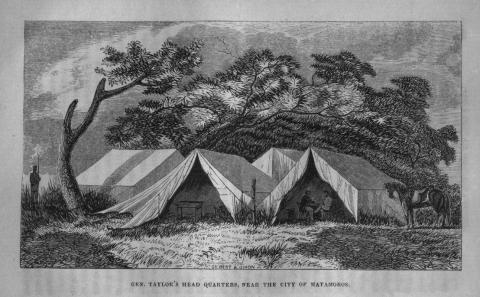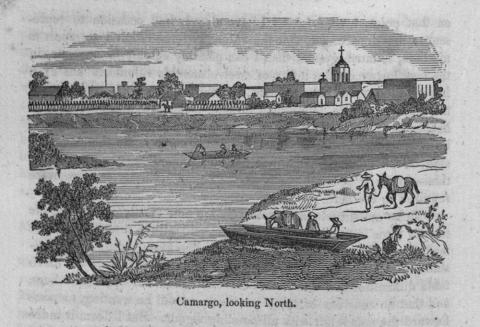Biographies | Essays | Correspondence | Diaries & Journals | Newspapers | Images | Maps
The U.S. victories at Palo Alto and Resaca de la Palma in early May, 1846 had driven the Mexican army back across the Rio Grande, thereby lifting the siege of Fort Texas. Taylor's army now began shelling the city of Matamoros, situated only a few hundred yards away on the opposite side of the Rio Grande. Unable to hold the city, Arista evacuated Matamoros on May 17, 1846.
Taylor's army entered the town the following day. In Washington, the War Department had issued a call for 50,000 volunteers, and in the weeks that followed volunteer regiments would be organized and would start to make their way to the theater of operations. By mid-July, Taylor had moved his army approximately 250 miles upriver to Camargo, a small village on the San Juan River, a tributary of the Rio Grande. Accessible by steamboat, Camargo would serve as a supply depot and a staging area for the Army of Occupation.
Dysentery and other diseases wreaked havoc on the U.S. army garrisoned at Camargo in the summer of 1846. Approximately one thousand U.S. volunteers died soon after their arrival in Mexico, and were buried along the banks of the Río San Juan.
By September, Taylor's army, now consisting of regular and volunteer regiments, was prepared to march on the city of Monterrey, located about one hundred miles to the southwest. Both Matamoros and Camargo remained under U.S. occupation for the duration of the war.


